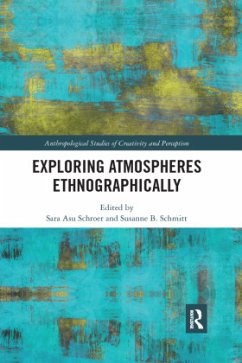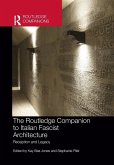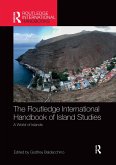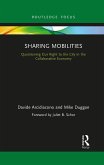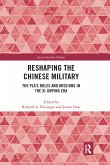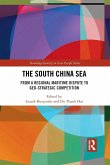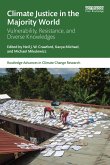The notion of atmosphere has always been part of academic discourse, but often refers to something vague and diffuse - a phenomenon connected with our affective engagement with the world that is difficult to grasp. This volume develops and refines the concept of atmosphere, seeking to render it productive for anthropological and social scientific research by bringing together a range of original ethnographic studies in combination with investigation of the use of the term in language. The chapters examine dimensions of atmosphere through topics of interdisciplinary concern, such as learning and the acquisition of skills, the experience of place, affect and mood, multi-species relations and the perception of weather and environment - whether in natural landscapes, medical and educational settings, homes or creative contexts - Exploring Atmospheres Ethnographically analyses the relational and transformational processes through which people perceive, experience and live in a moving atmospheric world. As such, it will appeal to scholars of anthropology, sociology, geography and cultural studies with interests in space and place, sensory ethnography and affect.
"As interest in studying atmospheric experience continues to expand across disciplines, the need for methodological development and case studies has become imperative. Sara Asu Schroer and Susanne Schmitt have gathered together an impressive range of insights from across the range of disciplinary and cultural territories that might be covered by 'ethnography' with respect to atmospheres. The movement between aesthetic, ecological and quotidian contexts that the book enables is an important addition to not only ethnographic studies, but humanities and social sciences subjects that seek to situate the experiential." - Martin Welton, School of English and Drama, Queen Mary University of London
"Exploring Atmospheres Ethnographically is a long-awaited anthropological response to a topic discussed so far primarily in philosophy and aesthetics. Sara Schroer and Susanne Schmitt anchor this superb collection of contributed chapters in the rich history of anthropological studies of ambience, aura, mood, and tone. Uniquely - and very timely - their contributors approach atmosphere as a more than human phenomenon, including shared experiences with birds, fish, and vapours, among others. From tangible to intangible atmospheric building blocks, the authors pay careful attention to materials, weather, light, colour, the built environment, and landscapes. The result is a trove of unique qualitative insights that will change how we think about moments of social togetherness, and about the impact of the differences that exist in the perceptual worlds of non-identical organisms. The book is highly recommended for anyone interested in affect studies, nonverbal communication, multispecies ethnography, new materialism, and pre-reflexive and immersive experiences." - Alex Oehler, Department of Anthropology, University of Regina
"Rather than insisting on a clear definition of, and a theoretical approach to, atmospheres, the strength of this well-written volume illustrates the potential implicit to a focus on the rather vague and ambiguous concept of atmosphere. It should be a must read for scholars interested in emotion, affect, air, the weather-world, and the built environment." - Rune Flikke, Department of Social Anthropology, University of Oslo
"This edited volume is important for anthropologists thinking about the sensorial aspects of their research. The editors, Sara Schroer and Susanne Schmitt, encourage a focus on the surrounding atmosphere within ethnography, as part of a multisensorial approach. Any researcher engaging in fieldwork, whether it is the natural or social sciences, needs be attuned to the dynamic, affective constitution of the atmosphere in the form of light, colour, odour, temperature, or surrounding weather conditions." - Natasha Fijn, Director of the Mongolia Institute, Australian National University
"Exploring Atmospheres Ethnographically is a long-awaited anthropological response to a topic discussed so far primarily in philosophy and aesthetics. Sara Schroer and Susanne Schmitt anchor this superb collection of contributed chapters in the rich history of anthropological studies of ambience, aura, mood, and tone. Uniquely - and very timely - their contributors approach atmosphere as a more than human phenomenon, including shared experiences with birds, fish, and vapours, among others. From tangible to intangible atmospheric building blocks, the authors pay careful attention to materials, weather, light, colour, the built environment, and landscapes. The result is a trove of unique qualitative insights that will change how we think about moments of social togetherness, and about the impact of the differences that exist in the perceptual worlds of non-identical organisms. The book is highly recommended for anyone interested in affect studies, nonverbal communication, multispecies ethnography, new materialism, and pre-reflexive and immersive experiences." - Alex Oehler, Department of Anthropology, University of Regina
"Rather than insisting on a clear definition of, and a theoretical approach to, atmospheres, the strength of this well-written volume illustrates the potential implicit to a focus on the rather vague and ambiguous concept of atmosphere. It should be a must read for scholars interested in emotion, affect, air, the weather-world, and the built environment." - Rune Flikke, Department of Social Anthropology, University of Oslo
"This edited volume is important for anthropologists thinking about the sensorial aspects of their research. The editors, Sara Schroer and Susanne Schmitt, encourage a focus on the surrounding atmosphere within ethnography, as part of a multisensorial approach. Any researcher engaging in fieldwork, whether it is the natural or social sciences, needs be attuned to the dynamic, affective constitution of the atmosphere in the form of light, colour, odour, temperature, or surrounding weather conditions." - Natasha Fijn, Director of the Mongolia Institute, Australian National University

